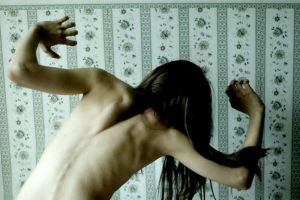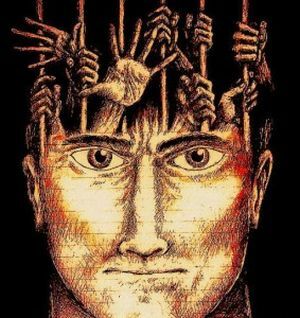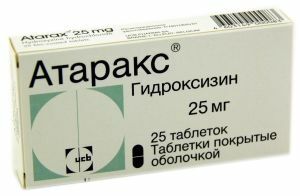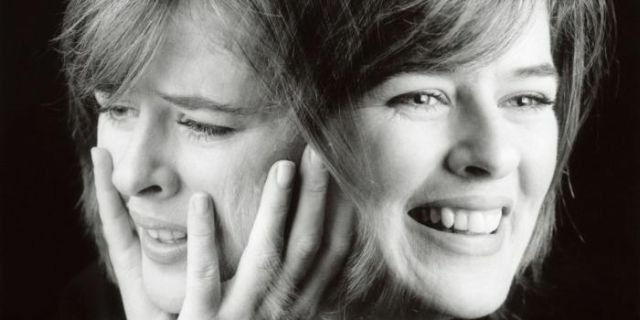 Akathisia( rabbit syndrome) is a serious disease that causes a lot of inconvenience to a person. This syndrome is often taken for the usual restlessness, because it is characterized by certain psychomotor disorders.
Akathisia( rabbit syndrome) is a serious disease that causes a lot of inconvenience to a person. This syndrome is often taken for the usual restlessness, because it is characterized by certain psychomotor disorders.
With the development of this disease, a person has an irresistible need to change the position of the trunk, which prevents him from sitting on the ground. With this diagnosis, there are problems with falling asleep and other disorders.
In medical practice, akathisia is a disorder of motor activity, characterized by constant internal anxiety and the need to be in continuous motion. That's why people with this syndrome all the time swing, raise and lower the lower limbs, march on the spot or shift from foot to foot.
Such patients can not sit or stand still. In a dream, the symptoms of the disease usually subside, but some people experience anxiety even after falling asleep.
Varieties and categories of violations
The disease is divided into categories according to various criteria. In the form of a leading sign, these types of akathisia are distinguished:

- Mental - for this type of deviation, the prevalence of neurological manifestations is characteristic. People with this diagnosis usually suffer from severe internal stress, they can have restless behavior and increased anxiety.
- Motor - accompanied by causeless movements, people constantly change their pose. Such people are distinguished by restlessness.
- Sensory - such people constantly feel an itch, which forces them to scratch repeatedly. Often, patients describe their sensations, like compression and stretching of the muscle tissue, as well as its movement inside the trunk.
In addition, there are different types of akathisia depending on the time of appearance of the first signs:
- Early or acute - develops within a few days after the start of drug use.
- Chronic or late - may occur after several weeks or even months after initiation of therapy.
- Akathisia of withdrawal - manifestations of the disease occur after discontinuation of the use of medicines or a decrease in the therapeutic dosage.
A set of provoking factors
Scientists distinguish two basic approaches to the study of the causes of akathisia, namely, pathophysiological and medicamentous. The first category of factors occurs much less often, and therefore is not taken into account practically.
Non-drug causes of the disease began to be studied by scientists only in the last decade, which became possible due to the development of precise diagnostic tools.
The medical theory of the origin of the disease refers to classical approaches that have a high degree of certainty. The development of this pathology in most cases is associated with taking medications from the category of antipsychotics. They have a direct or indirect effect on the synthesis of dopamine.
 It has also been established that akathisia has a definite association with Parkinson's disease and similar syndromes. However, at the present time, it has not been possible to establish the causative factor - it may be the disease itself or the medications used to treat it.
It has also been established that akathisia has a definite association with Parkinson's disease and similar syndromes. However, at the present time, it has not been possible to establish the causative factor - it may be the disease itself or the medications used to treat it.
In addition, antidepressants may lead to the onset of an illness. Researchers note the appearance of akathisia symptoms when testing these drugs. They are manifested in the form of increased excitation, hyperactivity, emotional lability.
It has now been possible to establish accurately that akathisia can develop after the application of the following categories of drugs:
- antipsychotics - Asenapine;
- SSRI - Citalopram, Fluoxetine;
- antidepressants - Trazodone, venlafaxine;
- antihistamines - Cyproheptadine, Dimedrol;
- withdrawal syndrome - barbiturates, benzodiazepines;
- serotonin syndrome - certain combinations of psychotropic drugs.
Clinical picture
Akathisia usually includes two main components. At the same time, one of them is leading, and the second is less pronounced.
So, the first component is called sensory or cognitive. It manifests itself in the form of discomfortable inner sensations that cause a person to perform certain actions. These symptoms the patient is aware of and can keep under control.
The sensory component is usually manifested in the form of a feeling of anxiety, tension, increased irritability. Sometimes people  have clear somatic disorders - for example, pain in the legs or lower back.
have clear somatic disorders - for example, pain in the legs or lower back.
The second component is motor. It consists in the fact that patients make repetitive standard movements that are individual for each person. Some people always walk, others - swing the body or knocking their feet, the third - itches or teeters nose.
Quite often at the very beginning of the motor act people cry out. They can also make mumbling sounds. After the motor activity begins to decline, the vocalization disappears. It can appear at the beginning of the next motor act.
Principles of diagnosis
Akathisia is difficult to diagnose with great difficulty. This pathology is very difficult to visualize using laboratory or instrumental methods.
To make an accurate diagnosis, the physician should carefully examine the patient's symptoms and anamnesis. Some people have difficulties with describing the clinical picture. In this case, the doctor can identify only one component of the violation - for example, motor or sensory. As a result, the patient's condition will be judged incorrectly.
To accurately determine the severity of a person's condition, a special Burns scale was invented. In this case, the person is in a standing position and sitting for 2 minutes.
In this case, the expert assesses the presence of motor disorders and reveals the degree of emotional activity. Finally, the patient himself assesses his condition. The final score can be from 1 to 5.
Correction and therapy of deviation
 Therapy of this disease should be selected individually taking into account the clinical picture and severity of the disease. The most effective method of treatment is a complete withdrawal or a significant reduction in the dosage of the drug, which provoked the appearance of these symptoms.
Therapy of this disease should be selected individually taking into account the clinical picture and severity of the disease. The most effective method of treatment is a complete withdrawal or a significant reduction in the dosage of the drug, which provoked the appearance of these symptoms.
However, in practice this is not always possible, which is due to the patient's mental state. The withdrawal of medications can lead to a serious deterioration in his state of health.
The main component of therapy is the appointment of drugs that can increase the effectiveness of antidepressants or antipsychotics without manifesting their side effects. Thanks to this, it is possible to significantly reduce the dosage of drugs provoking akathisia.
There are a number of treatments for the disease. Anti-Parkinsonics such as Biperiden, Benzthropin, etc., can cope with the disorder. Such drugs are often prescribed as a supplement to antipsychotics, which allows eliminating their side effects. Dosage should be selected by the attending physician.
Specialists also prescribe the following drug groups:
- Antihistamines and anticholinergics .They are not included in the category of potent medicines, but they can be
 part of effective therapy. In this case, the use of Diphenhydramine, Atarax. An additional advantage of such treatment is the fact that such drugs have a small sedative effect, which helps to calm a person. Drugs reduce excitement and restore sleep.
part of effective therapy. In this case, the use of Diphenhydramine, Atarax. An additional advantage of such treatment is the fact that such drugs have a small sedative effect, which helps to calm a person. Drugs reduce excitement and restore sleep. - Tranquilizers .Such drugs significantly reduce the activity of the disease, eliminating the feeling of anxiety, sleep disorders and spontaneous arousal. Such medications are usually prescribed if the doctor can not conduct a detailed diagnosis.
- Beta-blockers .A number of specialists say that such drugs as metoprolol, propranolol, help to reduce the action of neuroleptics and eliminate anxiety.
- Anticonvulsants .Such means are highly efficient. To the recommended medications it is customary to include Pregabalin, Valproate. They help to cope with the feeling of anxiety.
- Weak opioids .High efficacy for this diagnosis are tools such as Codeine, Hydrocodone.
With the late form of the disease, the elimination of the main drug is indicated. It must be replaced by an atypical antipsychotic. The doctor may prescribe olanzapine or clozapine.
With this diagnosis, the prognosis directly depends on the type of disease and the reasons for its appearance. For example, drug akathisia can last from 1 month to 6 months. At the same time the withdrawal form of the disease lasts about 15-20 days.
For the prevention of
To prevent the development of rabbit syndrome, the use of typical antipsychotics should be limited. This is especially important in cases where a person has contraindications to taking these drugs - in particular, affective disorders.
Akathisia is a serious enough disorder that requires complex treatment. To eliminate the symptoms of this ailment and not to allow negative consequences, it is necessary to consult a doctor in a timely manner and follow his recommendations clearly.



